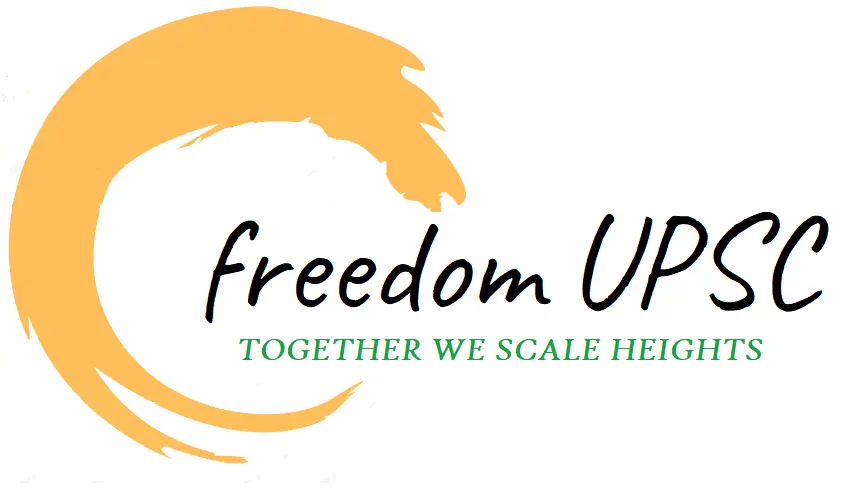1. Jarawa Tribe: Guardians of an Ancient Legacy
Context: Amid growing discussions around the upcoming 16th Census of India, experts have highlighted that reaching the Jarawa Tribe of the Andaman Islands will not be as challenging as presumed. This is due to the existing contact points and welfare initiatives already in place, which ensure minimal disruption to their secluded lifestyle while enabling essential communication.
Who Are the Jarawas?
The Jarawa Tribe is one of the world’s oldest surviving indigenous communities, classified by the Indian Government as a Particularly Vulnerable Tribal Group (PVTG). Their estimated population ranges from 250 to 400 individuals, making their protection both crucial and sensitive.
They inhabit the Middle and South Andaman Islands, living in nomadic bands of 40–50 members, deep within tropical rainforests, coastal stretches, and mangrove ecosystems.
A Glimpse into Their Origins:
Anthropologists believe the Jarawas may be descendants of the now-extinct Jangil tribe. Genetic and archaeological evidence suggests they are linked to the first human migrations out of Africa, potentially making them among the earliest settlers in Asia, dating back over 50,000 years.
They have withstood waves of external pressures, including British colonization (since 1789) and the turbulence of World War II, though not without a sharp decline in population.
Lifestyle and Culture:
The Jarawas follow a hunter-gatherer lifestyle, subsisting on forest produce, wild game, and coastal fishing. Their minimalist attire is practical for the humid and warm climate of the islands. Known for their strong physiques and good health, their nutrition-rich, natural diet plays a major role in their wellbeing.
The tribe is also fiercely protective of their territory, historically resisting outsiders and preserving their unique way of life. They maintain oral traditions, and their language is unrelated to any other known linguistic family, making it a subject of interest for anthropologists.
Upcoming 16th Census of India and Its Impact:
India’s next census will be conducted in two phases:
- October 1, 2026 – for snow-bound regions and the Andaman & Nicobar Islands
- March 1, 2027 – for the rest of the country
This census is historically significant as it will include caste-based enumeration across the nation for the first time since 1931. It also raises questions about how to ethically and accurately enumerate indigenous tribes like the Jarawas without violating their autonomy or disrupting their lives.
Additional Facts:
- Contact with outsiders is strictly regulated by the Andaman & Nicobar Islands Protection of Aboriginal Tribes Regulation (ANPATR), 1956.
- The Jarawa Reserve Area is off-limits to non-tribal people without special permission.
- Despite modern pressures, the tribe has resisted assimilation, maintaining a self-reliant existence.
- The Andaman Trunk Road, which cuts through Jarawa territory, has been controversial due to its impact on their habitat and privacy.
Conclusion:
The Jarawa Tribe stands as a living testament to the resilience of ancient cultures. As India approaches a new phase of demographic analysis through its census, it must balance data collection with respect for indigenous autonomy. Preserving the Jarawas’ heritage, habitat, and human rights remains a critical responsibility—not only for India but for global humanity.
2. Patriot Air Defence Missile System: Shield of the Skies
Context: In a significant move to bolster Ukraine’s defenses, the President of the United States has confirmed the deployment of Patriot Air Defence Missile Systems to Ukraine, amid escalating Russian military aggression. This step underscores Washington’s commitment to supporting Kyiv with advanced defense capabilities in the face of ongoing threats.
Overview of the Patriot Air Defence System:
The Patriot Missile System (MIM-104), short for Phased Array Tracking Radar to Intercept on Target, is a state-of-the-art surface-to-air missile (SAM) defense platform. Designed to operate in all weather conditions and at all altitudes, the Patriot is one of the most advanced and combat-tested missile defense systems in the world.
Initially developed to intercept enemy aircraft, the system has evolved to neutralize ballistic missiles, cruise missiles, loitering munitions, and unmanned aerial vehicles (UAVs).
Key Manufacturer and Operators:
- Developed by: Raytheon Technologies Corporation, a leading US defense and aerospace company.
- Primary user: United States Army
- Global operators: The Patriot system is fielded by numerous U.S. allies, including Germany, Japan, Israel, South Korea, Saudi Arabia, Poland, Romania, Sweden, Taiwan, and others, making it a symbol of shared defense strategy.
Combat History:
The Patriot first saw combat during the 1991 Gulf War, protecting territories such as Saudi Arabia, Kuwait, and Israel. It was later used extensively during the 2003 U.S. invasion of Iraq. Since then, it has become a critical element of air defense strategies across multiple continents.
System Components and Structure:
A Patriot battery—the basic combat unit—includes:
- A phased-array radar for target detection and tracking
- An engagement control station (ECS)
- Advanced computer systems and power generators
- Up to eight launchers, each carrying four ready-to-fire missiles
Typically, around 90 soldiers are assigned to one battery, but during operations, only three personnel are needed in the ECS to manage combat engagement.
Advanced Features and Technology:
- Guidance System: Utilizes Track-Via-Missile (TVM) technology, allowing the system to transmit mid-course guidance updates from the control center directly to the missile.
- Interceptor Variants:
- PAC-2: Employs a blast-fragmentation warhead
- PAC-3: Features cutting-edge hit-to-kill kinetic energy technology for direct target interception
- Radar Range: Over 150 kilometers (93 miles)
- Interceptor Range: Can destroy targets up to 160 kilometers away and at altitudes exceeding 24 kilometers
Extra Facts and Global Relevance:
- The Patriot system’s flexibility allows integration into NATO’s missile defense network.
- It has successfully intercepted missiles in live combat scenarios, including recent attacks involving drones and hypersonic threats.
- The PAC-3 Missile Segment Enhancement (MSE) variant offers improved range, speed, and maneuverability, making it effective against high-speed ballistic missile threats.
- As global missile threats become more sophisticated, the Patriot remains a cornerstone in the evolving multi-layered air defense strategy of both the United States and its allies.
Conclusion: The Patriot Air Defence System stands as a symbol of technological superiority and global defense collaboration. Its deployment to Ukraine signals a strategic escalation in Western support and reflects the system’s critical role in modern warfare and deterrence. With evolving interceptor technology and combat-proven reliability, Patriot continues to be a trusted shield in the skies.
3. Flue Gas Desulphurisation (FGD): Balancing Clean Air and Energy Demands
Context: In a controversial policy shift, the Ministry of Environment, Forest and Climate Change has recently exempted most coal-based power plants in India from the mandatory installation of Flue Gas Desulphurisation (FGD) systems. These systems are designed to control sulphur dioxide (SO₂) emissions, a major contributor to air pollution and acid rain.
What is Flue Gas Desulphurisation (FGD)?
Flue Gas Desulphurisation (FGD) refers to a pollution-control technology that removes sulphur dioxide (SO₂) from the exhaust gases released by burning fossil fuels, especially coal. The primary objective of FGD is to reduce SO₂ emissions, which contribute to:
- Acid rain
- Smog formation
- Soil and water acidification
- Human respiratory diseases
- Infrastructure corrosion
How Does FGD Work?
FGD systems rely on chemical reactions that neutralise SO₂ using substances like:
- Limestone (CaCO₃)
- Lime (CaO)
- Ammonia (NH₃)
These chemicals absorb or react with sulphur dioxide, forming compounds like gypsum (CaSO₄·2H₂O), which can be used in cement and construction industries.
Types of FGD Technologies:
- Dry Sorbent Injection (DSI)
- Injects lime or limestone directly into the flue gas stream.
- Suitable for small to medium plants with lower upfront costs.
- Wet Limestone Scrubbing
- The most widely used method.
- A limestone slurry reacts with SO₂, forming gypsum.
- Effective but requires larger infrastructure and water usage.
- Seawater FGD
- Utilises the alkalinity of seawater to absorb SO₂.
- Cost-effective for coastal power stations.
- Generates no solid waste, but is limited to marine locations.
Policy Evolution and Present Scenario:
In 2015, India introduced new emission standards, mandating all thermal power plants to install FGD systems by 2017. The directive applied to around 180 coal-fired plants (approximately 600 individual units). However, progress has been sluggish:
- As of now, only about 8% of units have installed FGDs.
- Most completed installations are by NTPC, India’s largest public-sector power utility.
Reasons Behind the Exemption:
Recent studies cited by the Environment Ministry include:
- Low sulphur content in Indian coal.
- SO₂ concentrations around plants with and without FGDs show minor differences.
- Sulphates in the atmosphere may have a cooling effect, counteracting some aspects of global warming.
Practical challenges also played a role:
- Shortage of global FGD vendors
- High capital and operational costs
- COVID-19 disruptions
- Concerns over rising electricity tariffs
Additional Facts and Global Context:
- Globally, countries like China, the U.S., and Germany have made FGD systems mandatory, drastically cutting down SO₂ emissions.
- Gypsum produced from FGDs is a valuable byproduct used in wallboard manufacturing and cement production.
- According to the World Health Organization (WHO), prolonged exposure to SO₂ can cause asthma, bronchitis, and other lung diseases.
- Lack of FGD installation may impact India’s international climate commitments, especially under the Paris Agreement.
Conclusion:
The exemption from FGD installation raises critical questions about the trade-off between environmental responsibility and economic practicality. While cost and feasibility challenges are real, neglecting SO₂ control could lead to long-term public health and ecological costs. As India continues to pursue energy security, there is a need for cleaner coal technologies, increased renewable energy integration, and sustainable pollution control policies that balance development with environmental protection.
4. Why India Must Back CIMMYT and IRRI: Honouring the Legacy of the Green Revolution
Context: The term “Green Revolution” was first introduced in 1968 by William S. Gaud of USAID, referring to a sweeping global effort to boost agricultural productivity through scientific innovation. At the heart of this transformation were high-yielding wheat and rice varieties, which played a decisive role in averting famines in countries like India.
Recently, the United States Agency for International Development (USAID)—a key driver of global agricultural development—was shut down under a U.S. policy overhaul. This closure has left institutions like CIMMYT (International Maize and Wheat Improvement Center) facing a significant funding shortfall. In 2024, USAID contributed $83 million of CIMMYT’s $211 million annual revenue.
Now, with U.S. support gone, CIMMYT is turning to India, one of its biggest beneficiaries, to secure its future.
What Is CIMMYT? Why Does It Matter?
CIMMYT, based in Mexico, is a global leader in maize and wheat research. It is to wheat what the International Rice Research Institute (IRRI), based in the Philippines, is to rice. Both were created with support from the Rockefeller and Ford Foundations, and both were part of a broader Cold War-era strategy to combat food insecurity and prevent social unrest in developing nations.
Legendary agronomist Norman Borlaug, often called the “Father of the Green Revolution,” was closely associated with CIMMYT. His team developed semi-dwarf wheat varieties like Lerma Rojo 64A and Sonora 63, which were first sown in India in 1964–65—ushering in a new era of food self-sufficiency.
India’s Green Revolution: A Debt Owed
India reaped enormous benefits from research at CIMMYT and IRRI. Indian scientists adapted their breeding materials to create iconic wheat and rice varieties, such as:
- Wheat:
- Kalyan Sona and Sonalika (1967–68)
- HD 2285 (1982), HD 2329 (1985), HD 2967 (2011)
- Rice:
- Swarna (1982), Samba Mahsuri (1986) by Andhra Pradesh Agricultural University
- Pusa Basmati 1 (1989), 1121 (2003), 1509 (2013) by IARI
In 2024–25, India exported 6.1 million tonnes of basmati rice worth nearly $6 billion, with over 90% of varieties developed at IARI.
Norman Borlaug praised India’s scientific strength, pointing to institutions like IARI and visionary leaders like M.S. Swaminathan, who steered the country from famine to food surplus.
CIMMYT and IRRI: Still Vital for India’s Future
The need for international research support has not faded. In 2024–25, six of the top 10 wheat varieties in India—covering over 20 million hectares out of 32 million—originated from CIMMYT breeding material.
Since the peak of HD 2967 (a wholly Indian-bred variety) in 2017–19, most new wheat varieties released in India are still heavily reliant on CIMMYT germplasm.
Likewise, IRRI continues to support rice research in areas such as:
- Drought and heat tolerance
- Pest and disease resistance
- Shorter maturity cycles
- Nutritional quality improvement (e.g., zinc and iron-rich rice)
Strategic Research Areas for the Future:
To ensure long-term food security and resilience in the face of climate change, India must invest in cutting-edge agricultural research, including:
- Heat- and drought-tolerant crop varieties
- Nitrogen-use efficiency to reduce fertilizer dependency
- Gene-editing tools like CRISPR for precision breeding
- AI and remote sensing for smart farming and yield prediction
India’s Investment: Too Little, Too Late?
Despite the immense benefits derived over decades, India’s recent funding is surprisingly modest:
- $0.8 million to CIMMYT
- $18.3 million to IRRI
Given India’s pivotal role in global food trade and its dependence on international breeding research, this level of support is inadequate and unsustainable.
Conclusion: A Debt India Must Repay
India owes much of its food security, agricultural prosperity, and scientific progress to the foundational work done by CIMMYT and IRRI. With USAID funding no longer available, India must step up—not just out of gratitude, but out of strategic necessity.
Supporting these institutions is not a donation—it is an investment in:
- Future crop resilience
- Global leadership in food systems
- Strengthened scientific collaboration
However, this global support must go hand-in-hand with strengthening India’s own agricultural research system, ensuring a balanced, self-reliant yet globally connected food future.
5. Recognising India’s Open Ecosystems: A Call for Ecological Justice and Policy Transformation
Context: In a landmark move to reduce emissions and promote sustainable logistics, the Government of India has officially launched its first dedicated electric truck incentive scheme under the newly unveiled PM E-DRIVE (Electric-Drive for Rapid Innovation & Vehicle Electrification) initiative. This marks a significant shift in India’s electric mobility policy, especially for the commercial and heavy-duty vehicle sector, which had been previously overlooked under earlier programs like FAME (Faster Adoption and Manufacturing of Electric Vehicles).
A total outlay of 500 crore has been sanctioned for this scheme to support the procurement of 5,600 electric trucks across the country. In a focused effort to tackle urban pollution, 20% of this fund is reserved for vehicles registered in Delhi, one of the world’s most polluted cities.
Key Highlights of the Electric Truck Incentive Scheme:
- Eligibility Criteria:
- Manufacturers must offer a battery warranty of 5 years or 5 lakh kilometres, whichever comes earlier.
- The motor and vehicle must carry a warranty of 5 years or 2.5 lakh kilometres.
- Mandatory scrapping of old diesel trucks is required to avail the incentive, promoting fleet modernization and reduced emissions.
- Implementation Period:
- The scheme will be active from October 1, 2024, to March 31, 2026.
- It subsumes the existing EMPS-2024 (Electric Mobility Promotion Scheme), making PM E-DRIVE the umbrella scheme for EV subsidies in India.
Extended Subsidy Structure for Other EV Categories:
The PM E-DRIVE scheme also revamps the subsidy structure for other categories of electric vehicles:
- Electric Two-Wheelers:
- Year 1: 5,000 per kWh (maximum incentive 10,000).
- Year 2: 2,500 per kWh (maximum incentive 5,000).
- Electric Three-Wheelers:
- Standard e-rickshaws: 25,000 in Year 1, 12,500 in Year 2.
- L5 Category Cargo E-Three-Wheelers: 50,000 in Year 1, 25,000 in Year 2.
Smart e-Voucher System for Hassle-Free Subsidies:
To ensure transparency and ease in claiming subsidies, the Ministry of Heavy Industries is introducing an innovative e-voucher system:
- One vehicle per Aadhaar card will be eligible.
- Upon purchase, an e-voucher will be auto-generated and signed.
- This e-voucher is essential for OEMs (Original Equipment Manufacturers) to claim reimbursement.
Charging Infrastructure Expansion to Tackle Range Anxiety:
Understanding the importance of charging availability, the scheme will prioritize the development of Electric Vehicle Public Charging Stations (EVPCS):
- Select cities with high EV adoption will see rapid installation of chargers.
- Highways with heavy freight traffic will also be equipped to support electric truck journeys.
Additional Insights: India’s Push Towards a Greener Transport Sector
- India’s road freight sector contributes nearly 40% of vehicular emissions, despite trucks making up less than 5% of total vehicles.
- Transitioning even 10% of the truck fleet to electric could save over 3 billion litres of diesel annually.
- India aims to electrify 30% of its vehicle fleet by 2030 under its National Electric Mobility Mission Plan.
Conclusion:
With the first-ever focused incentive scheme for electric trucks, India is sending a strong signal towards achieving net-zero emissions in the transport sector. The PM E-DRIVE initiative not only accelerates the shift towards clean mobility but also supports Make in India, job creation, and a greener economy.
6. Singapore in Focus: A Strategic Maritime Hub and India’s Trusted Partner
Context: India’s External Affairs Minister recently held discussions with his Singaporean counterpart, aiming to deepen bilateral cooperation across trade, defence, digital connectivity, and strategic affairs. This engagement reinforces the growing importance of Singapore as a key partner for India in the Indo-Pacific region.
Singapore: A City-State of Global Significance
- Capital: Singapore
- Location: A sovereign city-state situated at the southern tip of the Malay Peninsula, Singapore consists of one main island and around 60 smaller islets.
- It lies approximately 137 km north of the Equator, granting it a tropical equatorial climate with high humidity, year-round rainfall, and uniformly warm temperatures.
Maritime Boundaries and Strategic Positioning:
- North: Bordered by Malaysia, separated by the Johor Strait.
- South: Close to Indonesia, across the Singapore Strait.
- Strategically located near the Strait of Malacca, one of the world’s busiest shipping lanes, connecting the Indian Ocean with the South China Sea.
Geographical and Economic Significance:
- Singapore is Southeast Asia’s largest port and consistently ranks among the top global ports by cargo tonnage.
- It has leveraged its geographical advantage to emerge as a major hub for global finance, logistics, and maritime trade.
- Its Port of Singapore serves over 600 ports in 120 countries, underscoring its critical role in global commerce.
India-Singapore Relations: A Growing Partnership
- Singapore is one of the largest foreign investors in India, with strong ties in infrastructure, fintech, startups, and skill development.
- The two nations engage in joint military exercises, cyber cooperation, and are part of key regional forums like the ASEAN, East Asia Summit, and Indian Ocean Rim Association (IORA).
- Singapore also hosts a large and vibrant Indian diaspora, enhancing people-to-people ties.
Extra Insight:
- Singapore was once part of British Malaya, gaining independence in 1965 after a brief merger with Malaysia.
- Despite its small size, Singapore ranks high on global indices of education, innovation, and ease of doing business.
- The country follows a parliamentary republic model, with a unicameral legislature and is known for efficient governance and low corruption.
Conclusion:
Singapore’s strategic maritime location, economic prowess, and robust governance make it a crucial player in regional geopolitics. For India, deepening ties with this island nation is not just beneficial—it’s essential for a secure, connected, and prosperous Indo-Pacific.




